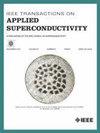The High Transmission Beamline Superconducting Magnets for High Rigidity Spectrometer Project at FRIB: Design Status
IF 1.7
3区 物理与天体物理
Q3 ENGINEERING, ELECTRICAL & ELECTRONIC
引用次数: 0
Abstract
The High Rigidity Spectrometer (HRS) project is a critical expansion of the Facility for Rare Isotope Beams (FRIB), designed to transport high-emittance rare isotope beams with magnetic rigidities of up to 8 Tesla-meters. The HRS consists of two main segments: the upstream High Transmission Beamline (HTBL) and the downstream Spectrometer Section (SPS). This paper presents the design feature of the HTBL's superconducting magnets, which include eight quadrupole triplets and four dipoles. Two different approaches for the quadrupole magnets are explored: the iron-dominated and coil-dominated designs, each with distinct electromagnetic characteristics and manufacturing techniques incorporating nested higher-order multipoles. The dipole design builds upon the proven technology of FRIB's existing switching dipoles, benchmarked from the National Superconducting Cyclotron Laboratory (NSCL) era. Here, we discuss the advantages and limitations of the proposed design options and their performance to meet HTBL operational requirements. Insights gained through FRIB's design advancements and challenges encountered in developing high-performance superconducting magnets for the HRS project are also presented.求助全文
约1分钟内获得全文
求助全文
来源期刊

IEEE Transactions on Applied Superconductivity
工程技术-工程:电子与电气
CiteScore
3.50
自引率
33.30%
发文量
650
审稿时长
2.3 months
期刊介绍:
IEEE Transactions on Applied Superconductivity (TAS) contains articles on the applications of superconductivity and other relevant technology. Electronic applications include analog and digital circuits employing thin films and active devices such as Josephson junctions. Large scale applications include magnets for power applications such as motors and generators, for magnetic resonance, for accelerators, and cable applications such as power transmission.
 求助内容:
求助内容: 应助结果提醒方式:
应助结果提醒方式:


